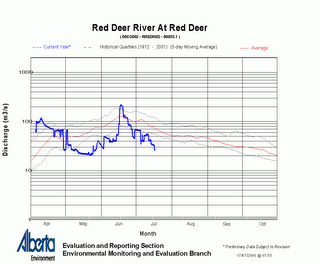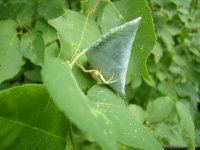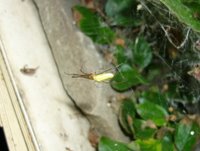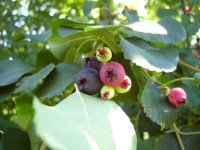 Keen observers might notice that some of the plants beside the Sanctuary paths look like someone's been rather rudely clearing his throat onto them. The fact is that we really don't need to be putting up "No Spitting" signs -- what looks like spit is actually the home of the nymph of the aptly-named Spittlebug. The foamy covering the nymph produces helps hide it and protects it from predators.
Keen observers might notice that some of the plants beside the Sanctuary paths look like someone's been rather rudely clearing his throat onto them. The fact is that we really don't need to be putting up "No Spitting" signs -- what looks like spit is actually the home of the nymph of the aptly-named Spittlebug. The foamy covering the nymph produces helps hide it and protects it from predators.I was able to get out for a brief walk on the Dr. George Trail this afternoon, and it was interesting to see that even in the hot, muggy weather we've been having things were still pretty busy in the grassland. In the grassland, she says? Well, yes. I know it can look like one of the blander parts of the Sanctuary, but this time of year it's actually got quite a lot going on. You just have to look at things on a smaller scale.
The goldenrod, asters, and (sigh) thistles have brought out the butterflies in decent numbers, for one thing. I'm not at my best with butterfly IDs, but even I could find wood nymphs, sulphurs, and fritillaries darting from flower to flower.
This is also grasshopper season, and while grasshoppers may not be appreciated in a crop I find it a very summery experience to walk through the meadow and hear them buzzing.
I suppose all this is by way of saying that even when the large animals are off in the quiet and shade of the forest, there's still a lot of life to be seen if you take a moment to look at things a little differently.
See you out on the path!




